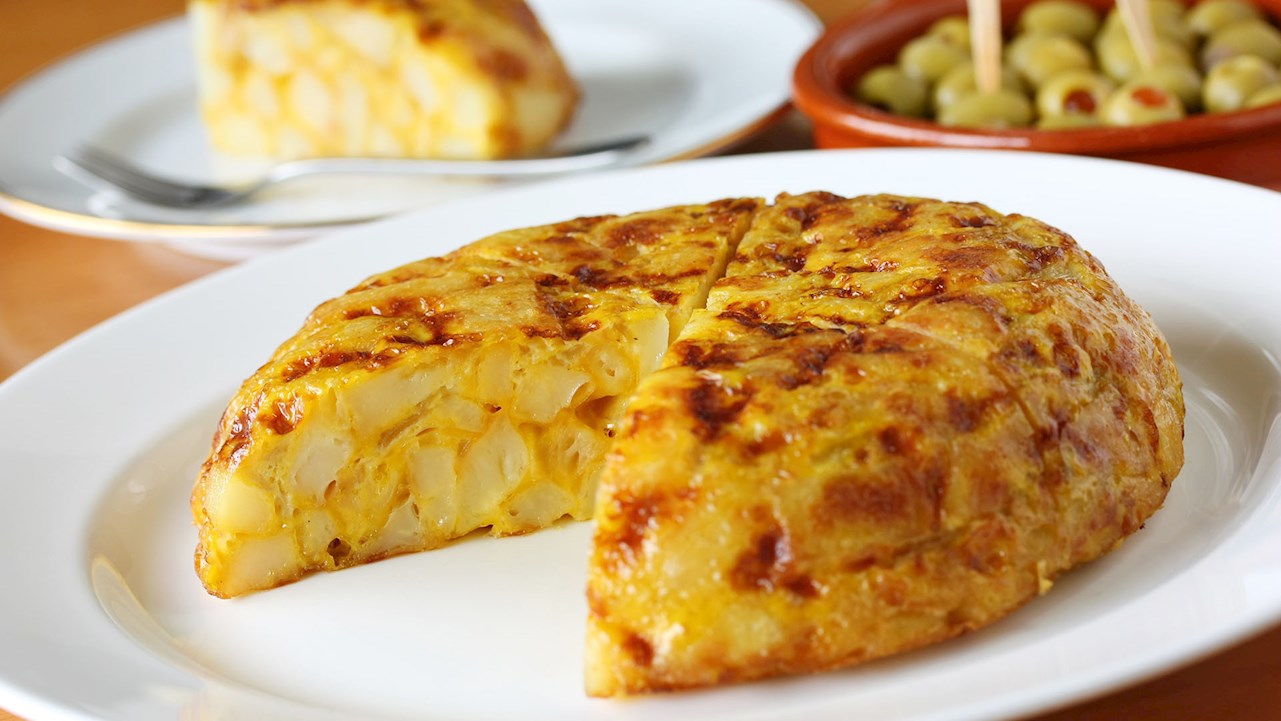If you embark upon a journey into the heart of Spanish cuisine, you’ll invariably encounter the beloved Spanish tortilla. Often mistaken for a Mexican flatbread by those unacquainted, this Iberian masterpiece is a hearty, potato-laden omelet that has stood the test of time and is today considered one of the symbols of Spanish culinary artistry.
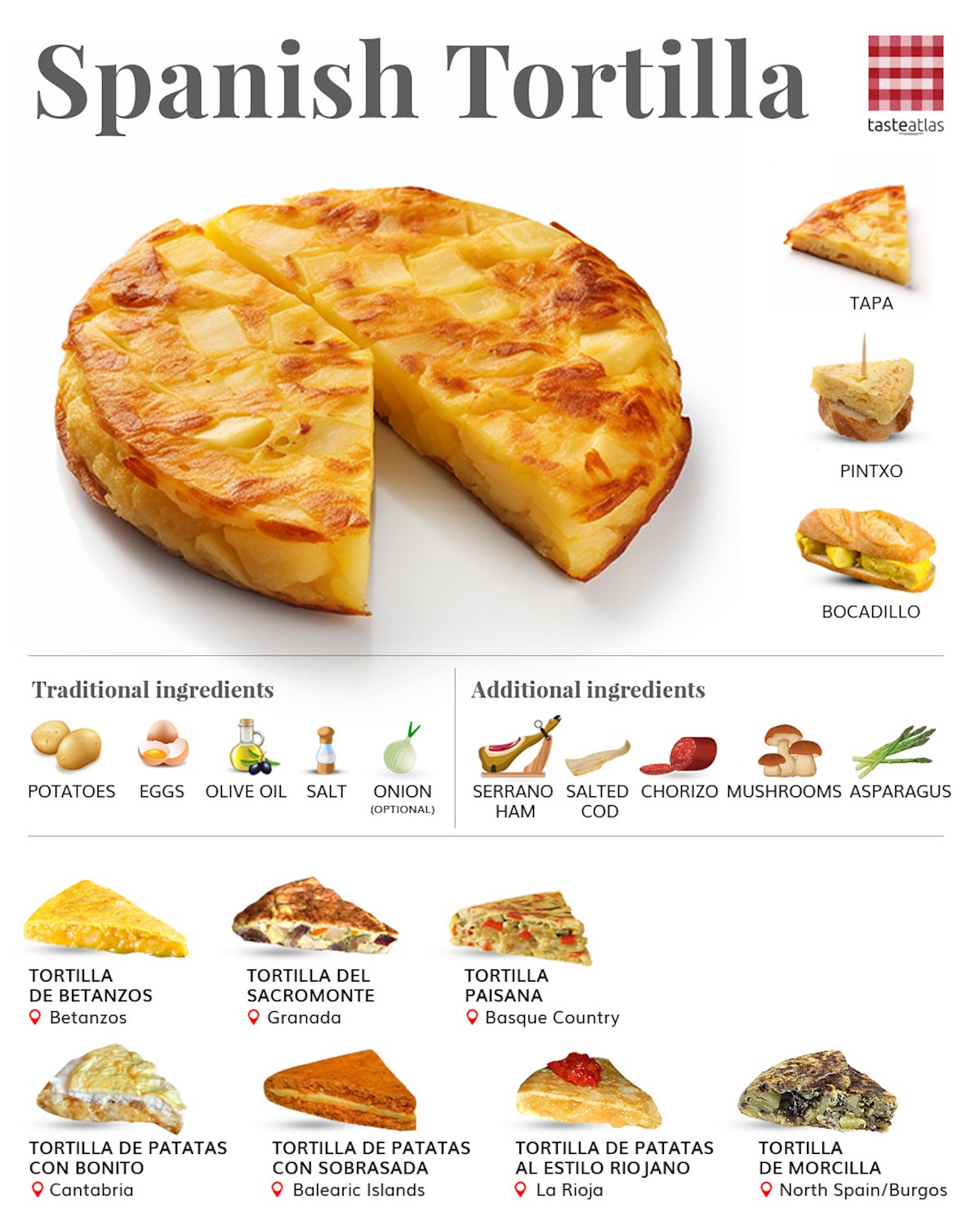
Basic Ingredients and Preparation
The traditional Spanish tortilla consists of four everyday ingredients: eggs, potatoes, olive oil, and salt. Some purists argue whether onions should be part of the traditional recipe, but over time, many have come to accept its inclusion for the depth and sweetness it adds.
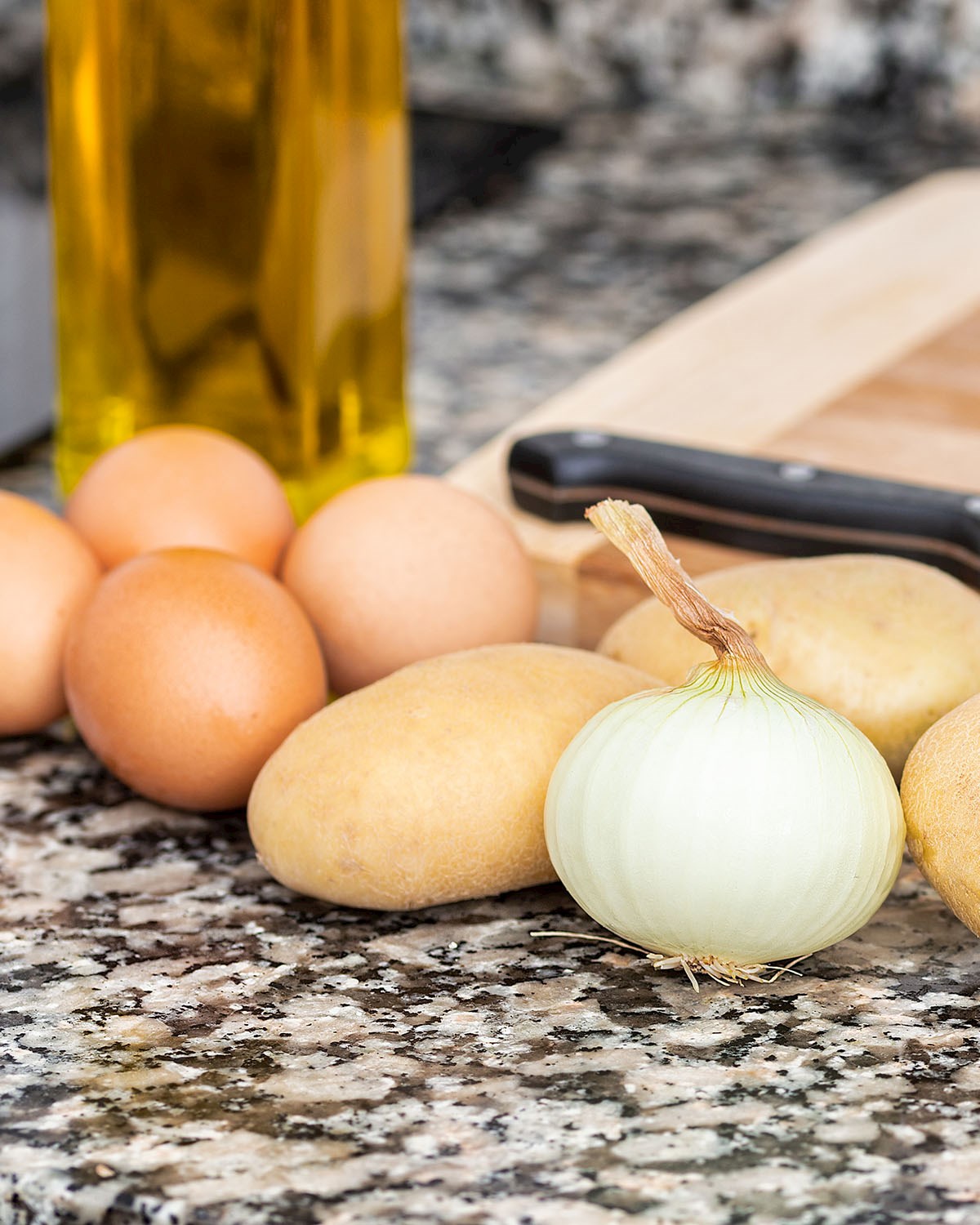 Credits: Shutterstock
Credits: Shutterstock
Steps to Prepare the Traditional Spanish Tortilla
• Potatoes: Start by peeling and slicing the potatoes into thin pieces. Some prefer their potatoes diced, but the choice is up to the chef. Similarly, if using onions, they should also be thinly sliced.
 Credits: Shutterstock
Credits: Shutterstock
• Poaching: In a large, non-stick frying pan, heat a generous amount of olive oil. Once hot, add the potatoes and onions, poach them until they become soft. The goal is to almost confit them, not to get them crispy.
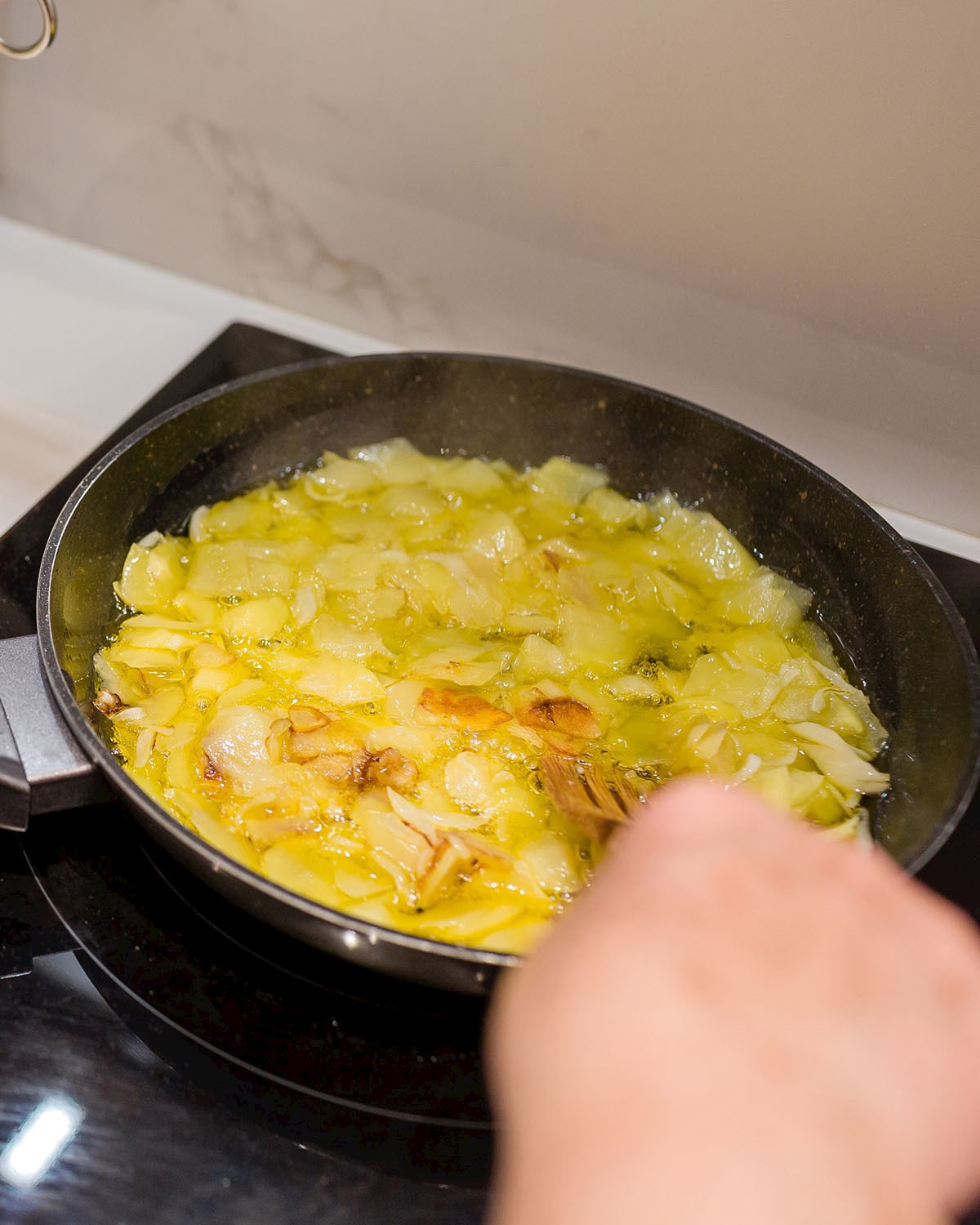 Credits: Shutterstock
Credits: Shutterstock
• Eggs: While the potatoes (and onions) are frying, beat the eggs in a large mixing bowl and season with salt.
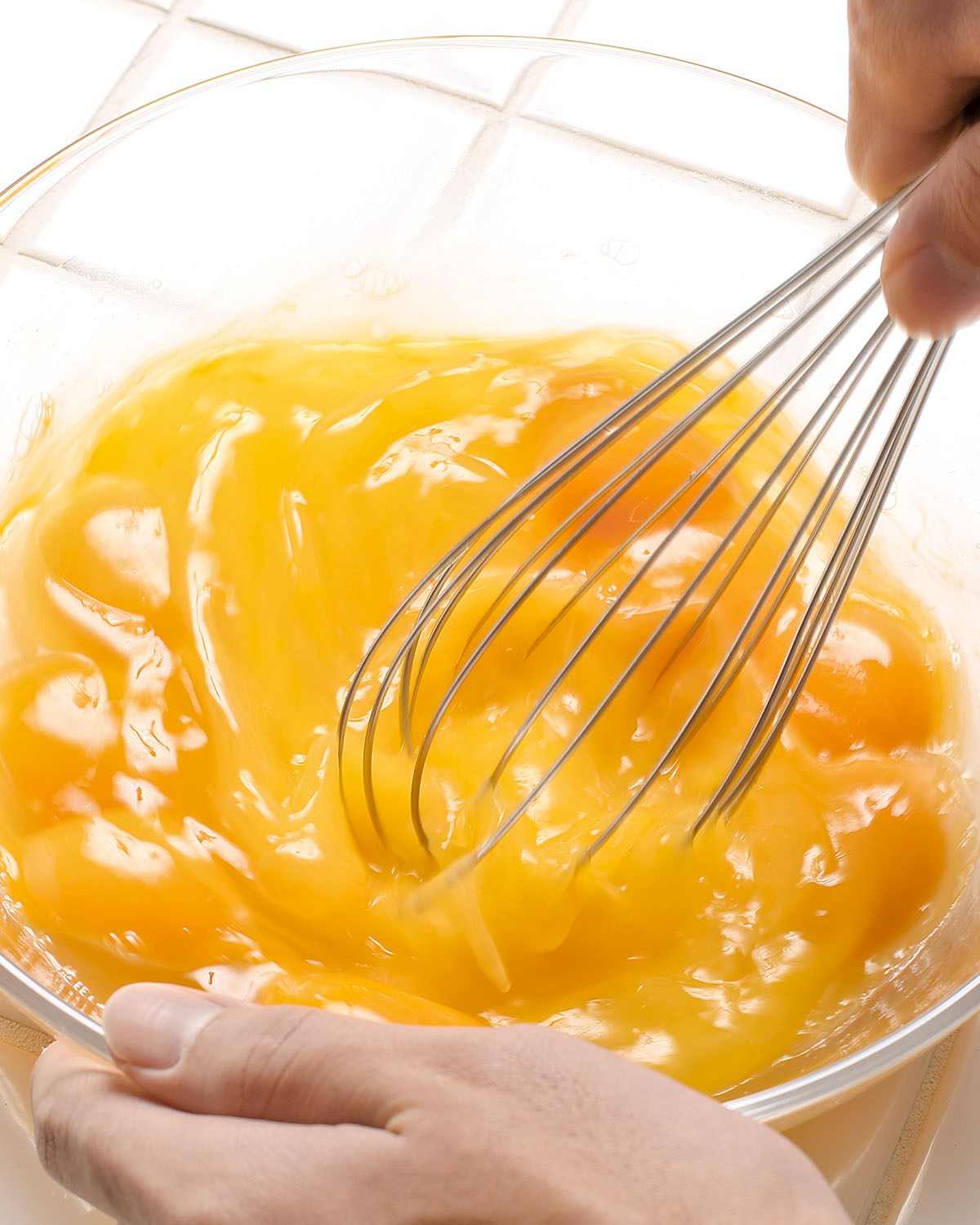 Credits: Shutterstock
Credits: Shutterstock
• Combining: Once the potatoes and onions are ready, remove them from the pan and drain any excess oil. Mix them into the beaten eggs and let this mixture sit for at least 10 minutes.
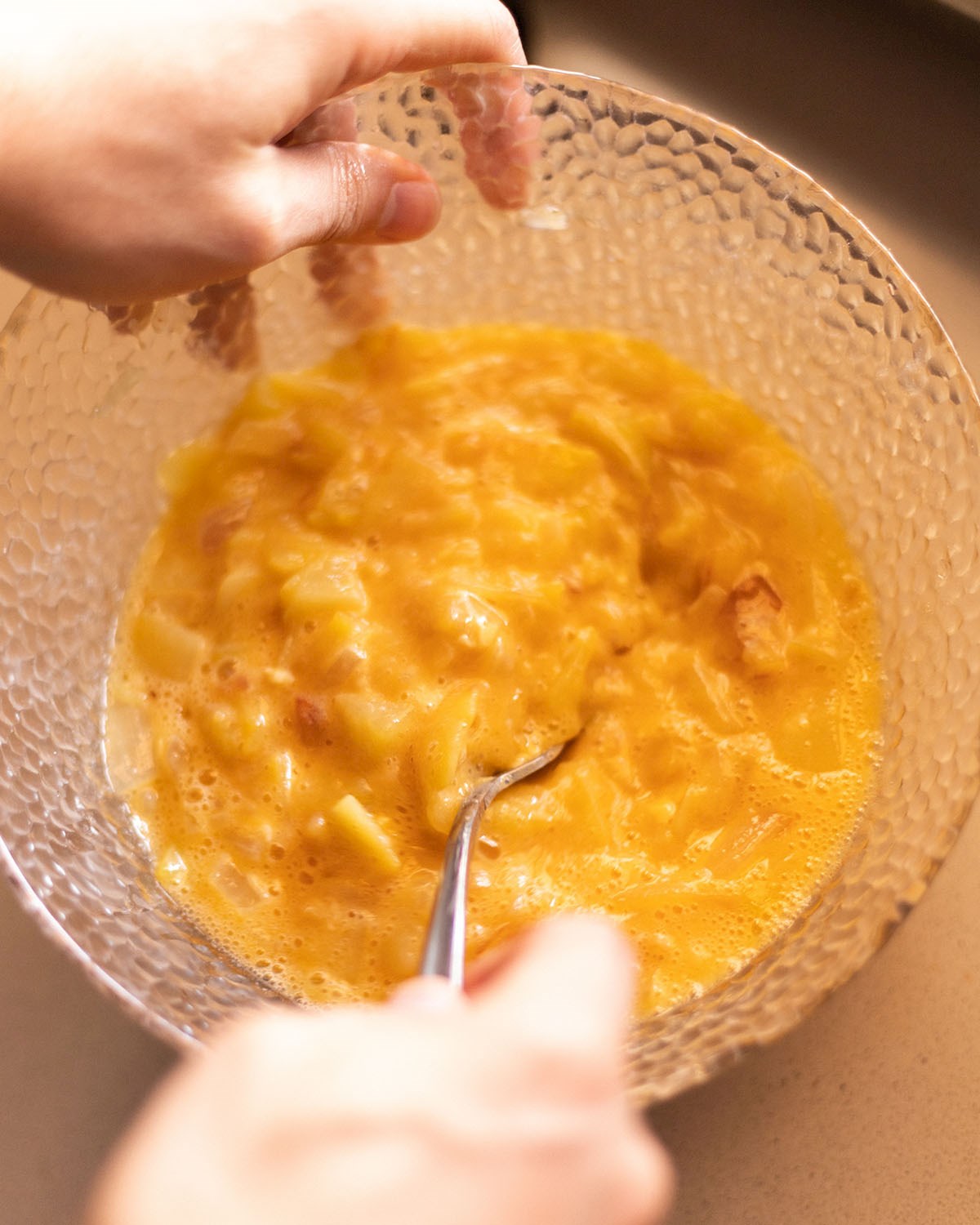 Credits: Shutterstock
Credits: Shutterstock
• Cooking: Pour the mixture back into the frying pan (with a bit of the reserved oil) and cook on a low to medium heat. Once the bottom is golden brown, use a large plate to flip the omelette and cook the other side. Some prefer their omelette slightly runny in the middle (known as jugosa), while others opt for a fully set center.
 Credits: Shutterstock
Credits: Shutterstock
• Serving: Serve with bread and aioli sauce. Alternatively, it can be served as a tapas or pintxos or used to prepare bocadillo de tortilla sandwich.
 Credits: Shutterstock
Credits: Shutterstock
For a traditional Spanish Tortilla recipe, with ingredients, measures, and cooking tips, click here.
Points of Contention
• To Onion or Not to Onion?
Perhaps the most famous controversy surrounding the Spanish omelette is the inclusion (or exclusion) of onions. Purists argue that the traditional recipe consists of only potatoes, eggs, salt, and olive oil.
However, many cooks include onions because they believe it adds depth and sweetness to the dish. This debate is so pronounced that in many Spanish bars, when you order a slice of tortilla, you might be asked, "With or without onion?"
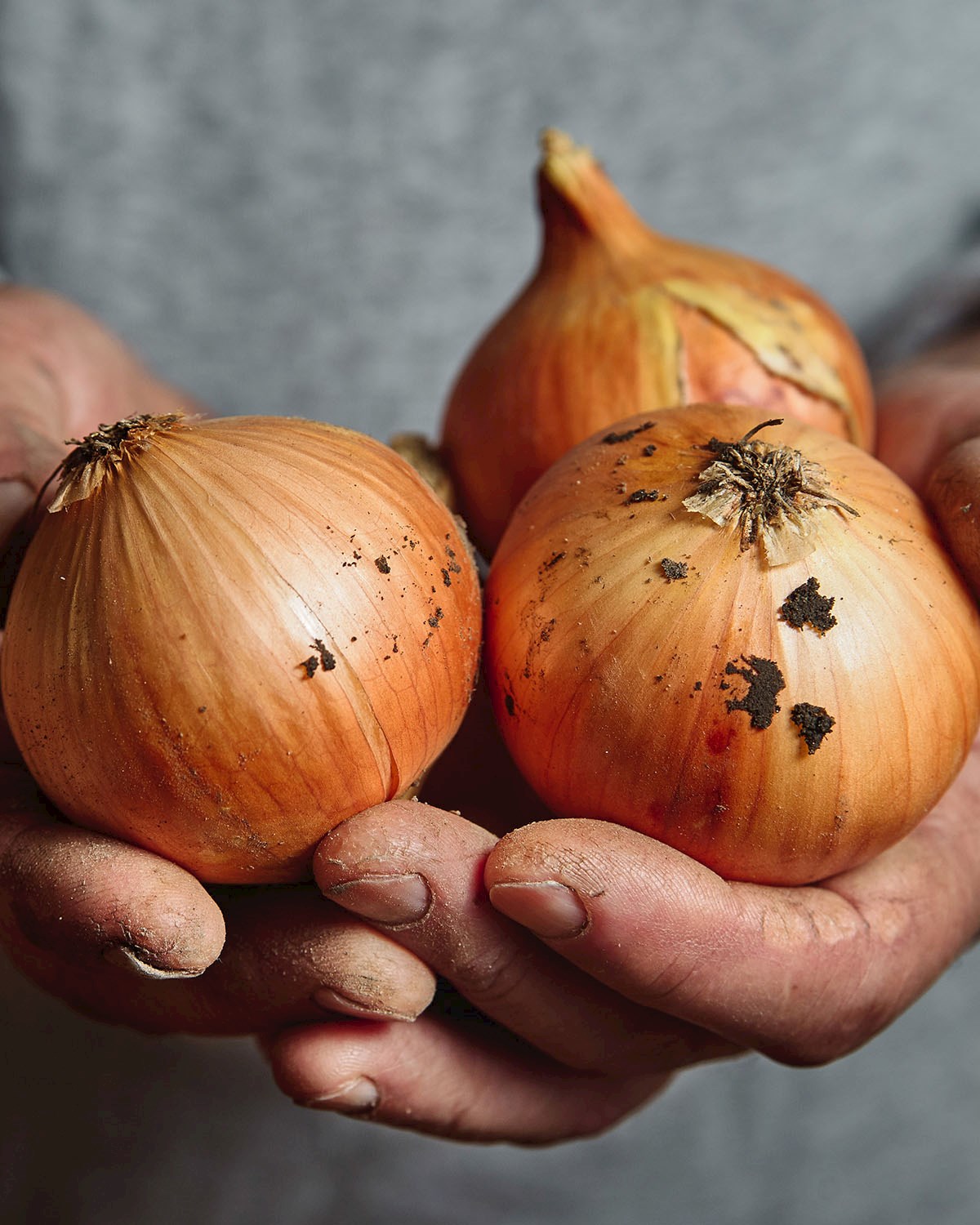 Credits: Shutterstock
Credits: Shutterstock
• Consistency: Runny or Fully-cooked?
The preferred consistency of the tortilla's interior is another subject of debate. Some people love their omelette jugosa or slightly runny in the middle. They argue that this gives the dish a creamier texture. On the other hand, others prefer their tortilla fully set, with no liquidy center.
 Credits: Shutterstock
Credits: Shutterstock
• Type of Potato
While it may seem trivial, the choice of potato can also be a contentious issue. Some chefs are adamant that a waxy potato variety is the only way to go, while others swear by the floury types. The difference affects both the texture and the final flavor of the dish.
Still, aficionados prefer certain potato varieties. Monalisa offers a sweet flavor and doesn't fall apart when fried. Agria has a moist and creamy texture, making the inside of the tortilla soft. Kennebec potatoes are great for frying and add a contrasting crisp to the tortilla. Rudolph potatoes are known for their white flesh and add a sweet, creamy taste.
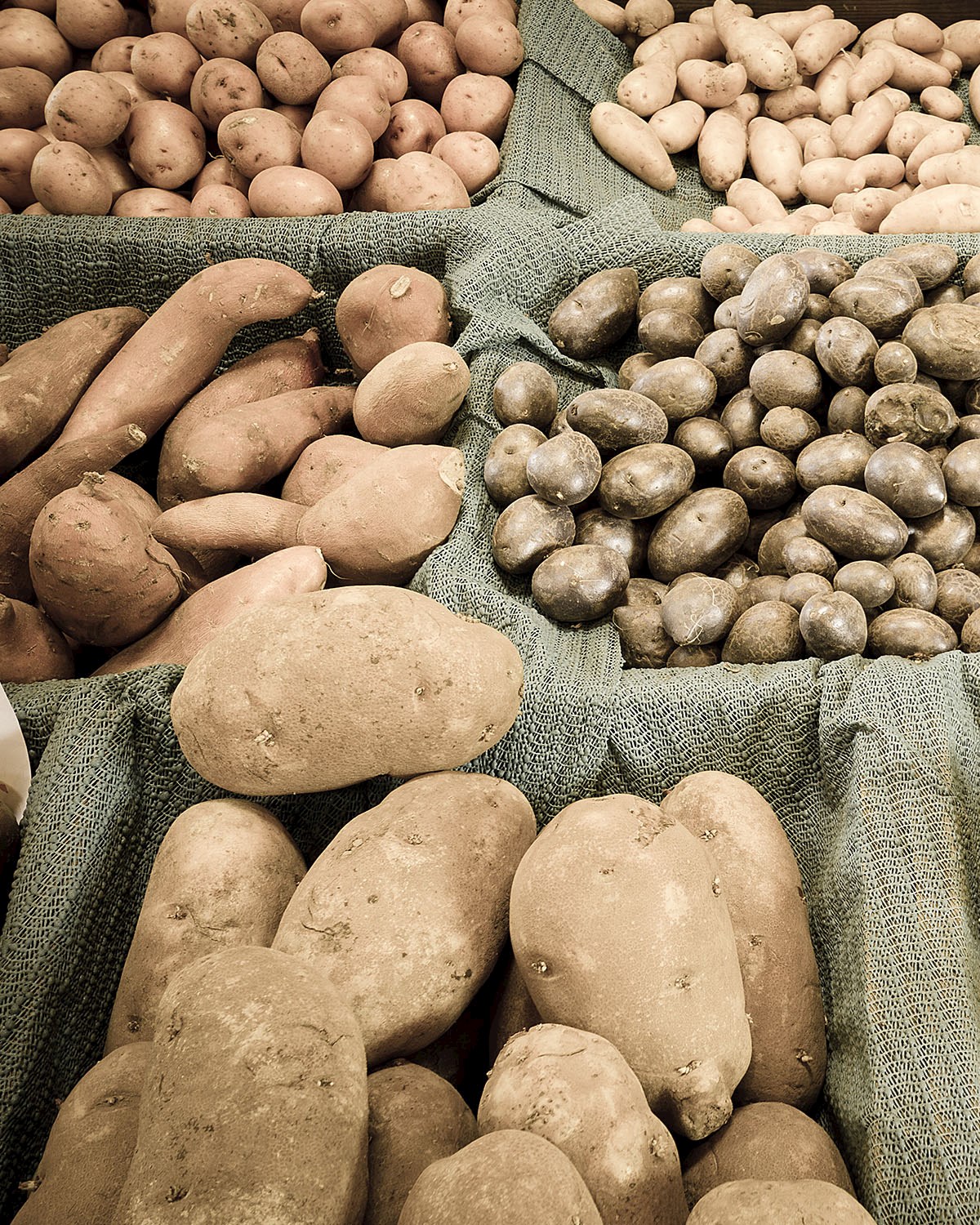 Credits: Shutterstock
Credits: Shutterstock
• Innovations and Fusion
While traditionalists might stick to the basic ingredients, many variations of the Spanish tortilla have emerged over time. Some incorporate different vegetables, like bell peppers or spinach, while others include meats such as chorizo or tuna. These twists on the classic recipe can sometimes be met with skepticism or disdain by purists. They argue that although delicious, these variations should not be called a Spanish tortilla.
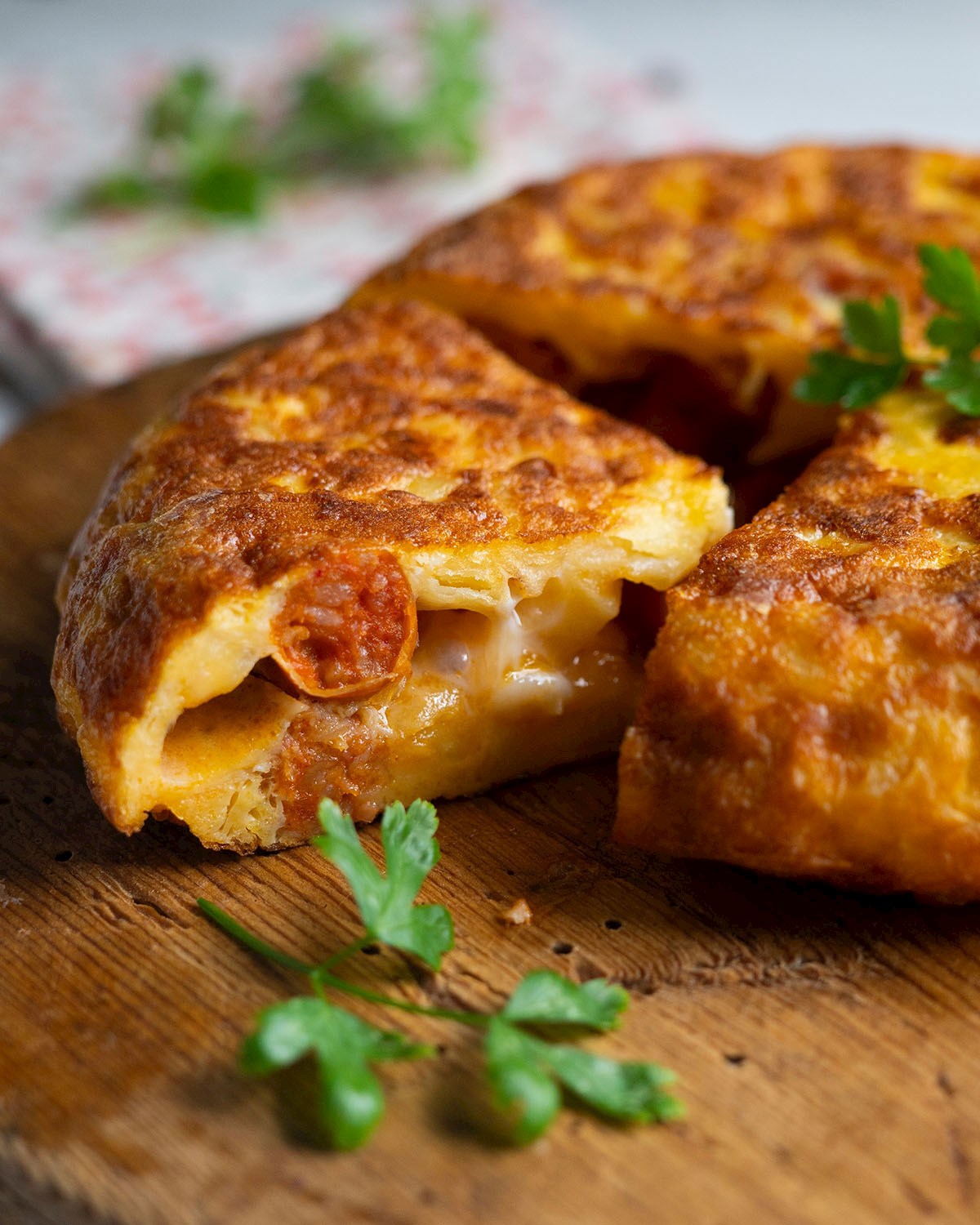 Credits: Shutterstock
Credits: Shutterstock
Notable Variants
The tortilla de Betanzos from Betanzos is special because it has a very runny inside. The tortilla del Sacromonte from Granada uses calf or lamb brains and testicles instead of potatoes, making it perhaps not a true Spanish tortilla de patata variant, yet nevertheless worthy of mention.
 Tortilla de Betanzos - Credits: La Tortillería
Tortilla de Betanzos - Credits: La Tortillería
Basque Country’s tortilla paisana adds delicious Serrano ham and veggies to the traditional recipe. Over in Cantabria, the tortilla de patatas con bonito mixes in onion, canned tuna, and mayonnaise. The Balearic Islands spice things up with the tortilla de patatas con sobrasada, adding onion and spicy sobrassada.
 Tortilla Paisana - Credits: Código Cocina
Tortilla Paisana - Credits: Código Cocina
La Rioja’s version, tortilla de patatas al estilo riojano, throws in onion and a special kind of chili pepper, alegria riojana. Lastly, the tortilla de morcilla from Burgos in north Spain adds a rich morcilla sausage.
For a traditional Tortilla Paisana recipe, with ingredients, measures, and cooking tips, click here.
